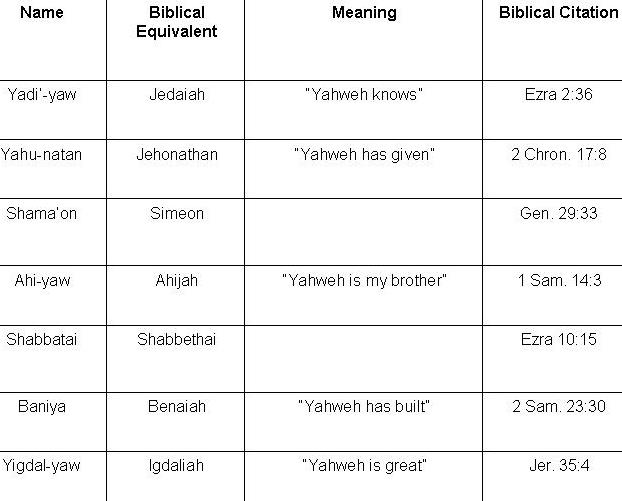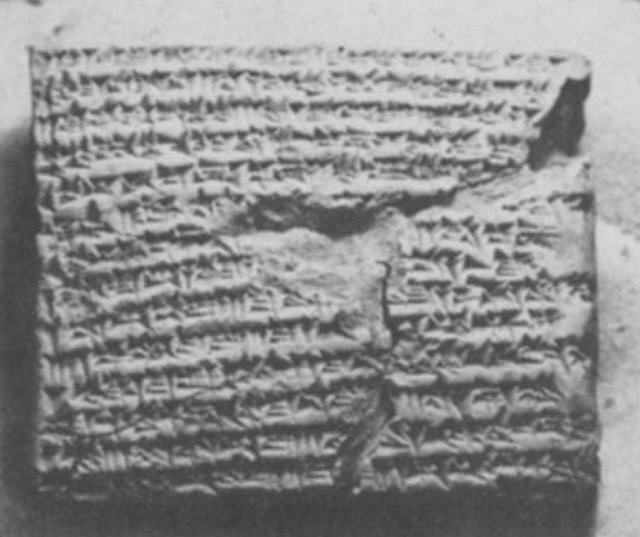The Murashû Archive, late 5th century BCE
Judeans in Babylonia
Relevant Textual Information- The following is a list of apparently Israelite names from this tablet-
Date- latter half of the 5th century BCE, mostly 440-416 BCE
Current Location- University of Pennsylvania Museum, Philadelphia
Language and Script- Neo-Babylonian?; cuneiform
The Marashu Archive 2
General Information-
• The Murashû firm was run by a family of financiers in Babylonia during the Persian Period. Archaeologists excavating at Nippur discovered an archive of almost 900 cuneiform tablets documenting the Murashûs’ business activities. Particular attention has been given to those names in the documents that have theophoric versions of the name Yahweh in them. Presumably, these people were descendants of the exiles from Judah who were displaced to Babylon over 150 years earlier by Nebuchadnezzar. From the Murashû documents it seems these Jews living in Nippur were fully integrated into Babylonian society. Although the connection seems to make sense, we should be cautious because names do not necessarily prove ethnicity. Even the Bible (see Daniel 1-7; Esther 2-7) mentions examples of exiles in Babylonia and elsewhere adopting local names. A leading example is Zerubbabel, the leader (Ezra 2-2) of the community of exiles who returned to Judah and whose name means “seed of Babylon.”
• The document shown here is a lease contract for a canal by a group of partners from Ellil-shun-iddin, a member of the Murashû family. Some of the partners have “Yahwistic” names, meaning their name includes part of the name Yahweh, the personal name of the Israel God, often translated in English Bibles as The Lord. Quite commonly we find that names in the Ancient Near East, including names in the Bible, are constructed as phrases that relate an action of a god to the bearer of the name. Some examples are Ishmael – “Yishma’el” in Hebrew, meaning ‘God hears,’ and Elijah – “Eliyah(u)” in Hebrew, meaning ‘The Lord Yahweh is my God.’
Translation- Yadi’-yaw, the son of Bana-’el; Yahu-natan, Shama’on and Ahi-yaw, the sons of Yadi’-yaw; Satur, the son of Shabbatai; Baniya, the son of Amel-nana; Yigdal-yaw, the son of Nana-iddin; Abda, the son of Apla; Nattun, the son of Shillim; and all their partners in Bit-gira; spoke freely to Ellil-shun-iddin, the son of Murashu, as follows- “Rent to us for three years the Mares’ Canal, from its inlet up to its outlet, and the tithed field which is on this canal, and the field which is to the left of the Milidu Canal, and the three marshes which are to the right of the Milidu Canal, except the field which drinks (its) waters from the Ellil Canal; and we will give you annually 700 kur of barley according to the standard measure of Ellil-shum-iddin, and, as an annual gift, 2 grazing bulls and 20 grazing rams.”
Circumstances of Discovery and Acquisition- The Murashû tablets were discovered in 1893 during excavations at Nippur undertaken by the University of Pennsylvania.






